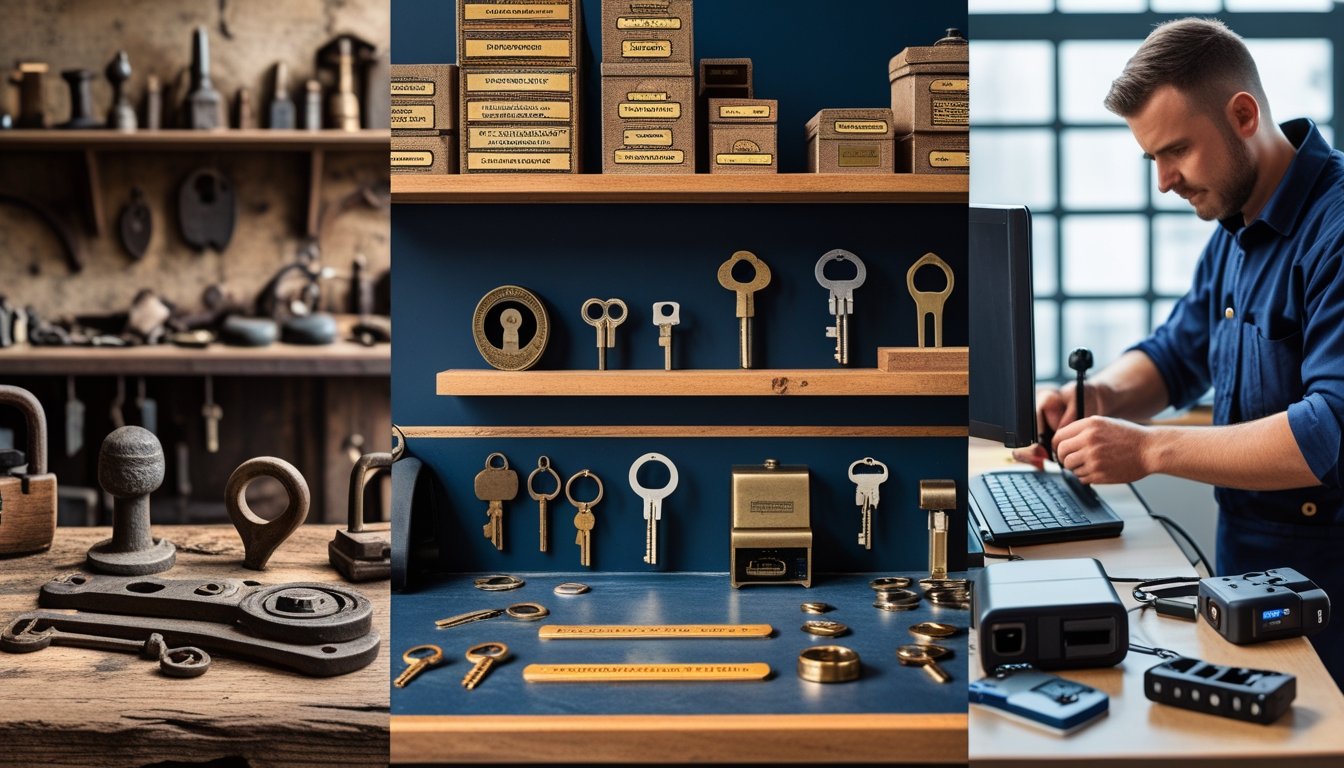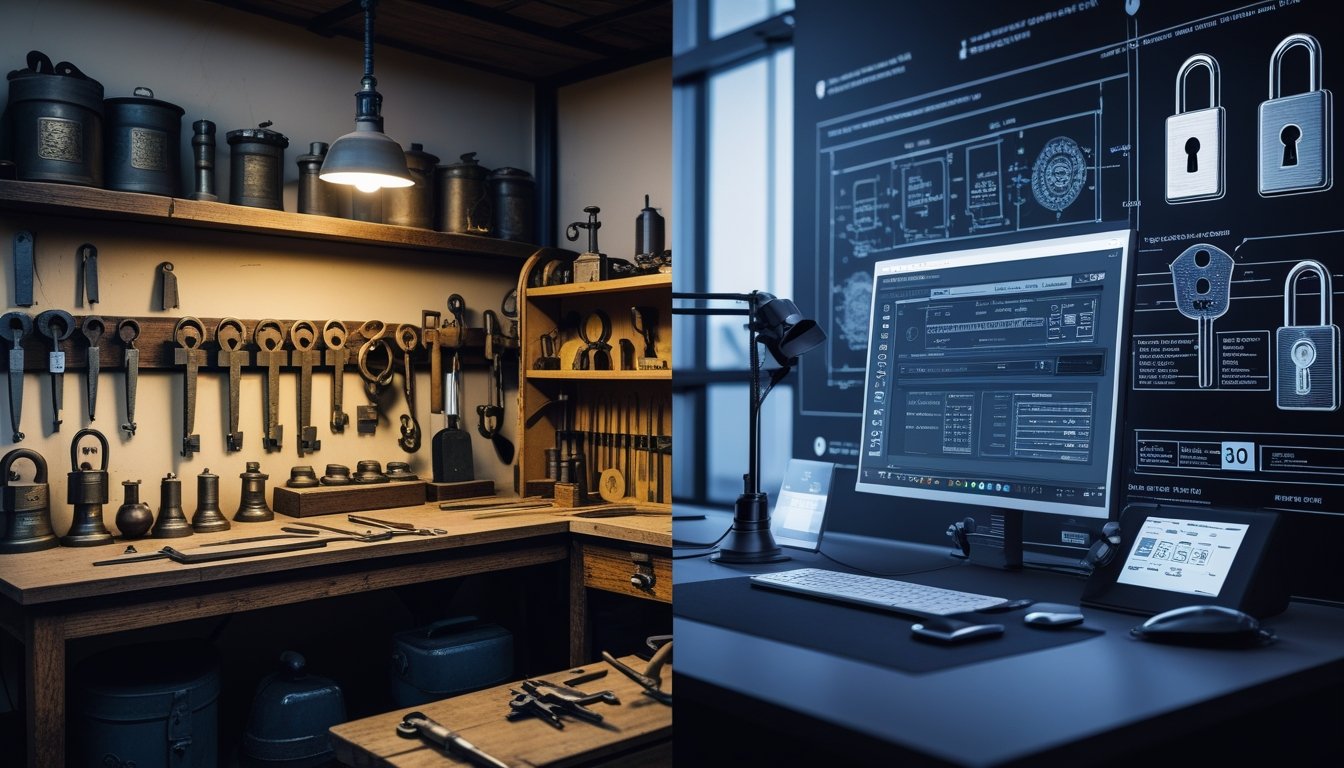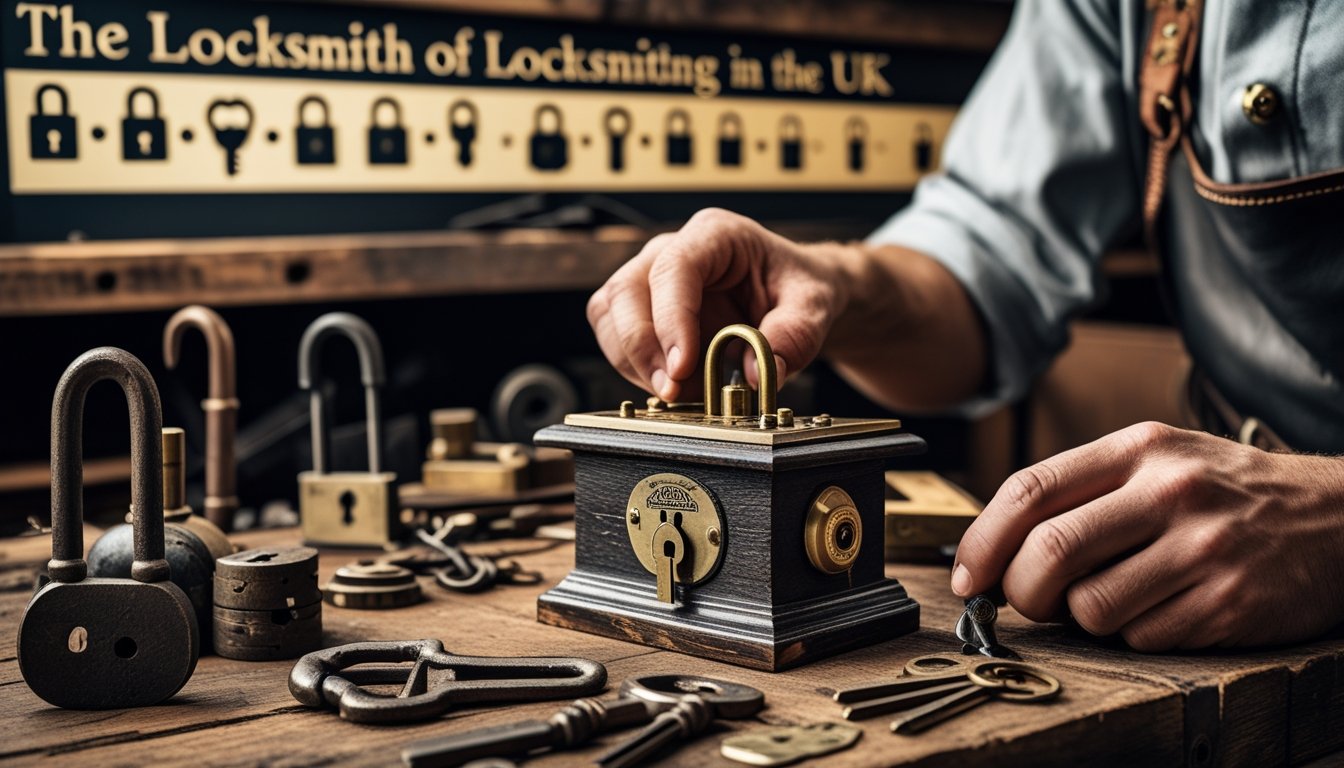Late updated: 22 Jun 2025 10:06
Written by: Elena Prescott
Historical Evolution of Locksmithing in the UK: A Journey Through Time
The history of locksmithing in the UK is a captivating narrative that charts the journey of an ancient craft transforming into a cornerstone of modern security. From the early, simplistic wooden locks used in ancient times to the advanced electronic security systems we see today, locksmithing has continuously adapted to meet the ever-evolving needs of society. This ongoing evolution not only highlights advances in technology but also reflects the essential role locksmiths have played in safeguarding our valuables and privacy.

As we delve into the annals of locksmithing, every era presents unique innovations and challenges that have shaped the craft. The medieval period showcased impressive ingenuity with metalwork, as locksmiths mastered the art of creating secure, intricate locks. The industrial revolution marked a period of significant change, with the introduction of mass-produced locks bringing new possibilities and complexities to the trade.
Exploring the modernisation of locksmithing provides insight into the critical contributions locksmiths make to our daily lives. From famous inventors like Linus Yale Jr. and Jeremiah Chubb to contemporary trends, the locksmith industry continues to innovate and adapt to new challenges. This historical journey underscores the vital importance of locksmiths as guardians of security and peace of mind in our communities.
Key Takeaways
- Locksmithing's roots trace back to simple wooden locks in ancient times.
- The industrial revolution brought mass production and innovation in lock mechanisms.
- Modern locksmithing integrates advanced electronic security with traditional skills.
Early History And Foundations Of Locksmithing In The UK
Locksmithing's roots in the UK trace back to ancient times when locks began as simple devices. Over centuries, the craft evolved through innovations in design and the contributions of key figures.
Origins Of Locksmithing And Ancient Lock Mechanisms
Lock mechanisms have fascinating beginnings. Ancient locks, dating back thousands of years, were primarily constructed from wood. These early locks were built on principles used across various ancient cultures. As their complexity increased, they laid the groundwork for more sophisticated designs. In the UK, locksmithing borrowed these principles, evolving from simple wooden mechanisms to intricate devices. These ancient locks showcased the ingenuity and creativity that would define the craft in the UK for centuries.
Development Of Wooden And Metal Locks
As time progressed, the transition from wooden to metal locks marked a significant evolution. With advancements in metallurgy, British artisans developed stronger and more secure metal locks. These changes not only enhanced security but also contributed to the reliability and durability of locks. The introduction of metal allowed for more intricate lock designs, which included the use of wards and levers, laying the foundation for modern locking systems.
Evolution Of Warded And Tumbler Locks
Warded locks, a significant progression, relied on a skeleton key mechanism that navigated the wards to unlock. These became a staple due to their simplicity and effectiveness. Beyond these, the invention of tumbler locks, particularly the double-acting lever tumbler lock, revolutionised security. Pioneered by Robert Barron and improved upon by the likes of Joseph Bramah and the Chubb brothers, these advancements led to locks that were incredibly difficult to tamper with, thus increasing their popularity.
Influential Figures In Early British Locksmithing
Key figures shaped early British locksmithing, notably Robert Barron, whose double-acting lever tumbler lock laid a cornerstone. Joseph Bramah, with his innovative Bramah lock, introduced unprecedented security features. The Chubb brothers, with the Chubb detector lock, added another layer of sophistication. These pioneers not only advanced the craft but also ensured that British locksmithing was revered globally. Their legacy is reflected in the continued innovation and reliability of British locks.
Industrial Advancements And The Modernisation Of Locksmithing

Throughout history, locksmithing has evolved in response to industrial and technological changes. In this section, we examine how the Industrial Revolution and modern technology have shaped the tools and expertise of locksmiths, from mechanical locks to smart electronic systems.
Innovations During The Industrial Revolution
The Industrial Revolution marked a pivotal point for locksmithing. Precision manufacturing allowed for more intricate and reliable lock designs.
Locksmiths could produce stronger locks with enhanced security, leading to innovations such as the double-acting pin tumbler lock. Linus Yale, a prominent figure, pioneered this design, which eventually became the foundation for the Yale lock still widely used today.
As factories emerged, mass production techniques made locks more affordable and accessible. This period underscored the importance of security devices, influencing both residential and commercial security solutions across the UK.
Rise Of Mechanical And Portable Lock Designs
During the 19th century, mechanical lock designs flourished. Padlocks evolved significantly, offering portability and adjustable locking mechanisms that catered to different security needs.
Harry Soref made a notable contribution with the invention of the laminated steel padlock, increasing durability and resistance to tampering. Master Locksmiths Association members played a crucial role in refining these designs and ensuring a high standard of security.
Our journey into advanced mechanical designs laid the groundwork for today's locksmithing practices, where expert craftsmanship and technological integration are paramount.
Transition To Electronic And Smart Locking Systems
The late 20th century ushered in electronic and smart locks, transforming how we approach security. These locks offer convenient features like keyless entry, biometric authentication, and remote access.
As security companies invested in innovation, electronic security systems with temporary access codes became standard in commercial security. The rise of cybersecurity concerns has led to advancements in digital lock mechanisms.
Biometric locks and AI-driven systems represent the future of locksmithing, providing advanced solutions tailored to our increasingly interconnected world.
Contemporary Locksmiths And The Evolution Of Security
Modern locksmiths have adapted to meet the demands of a rapidly changing landscape. Forensic locksmiths now assist in criminal investigations, analysing traces left on compromised locks.
The integration of smart home technology requires us to stay informed on the latest electronic and biometric systems. This evolving field necessitates continuous education and collaboration with security companies.
Looking ahead, the locksmith industry must balance embracing new technologies with safeguarding privacy and enhancing cybersecurity. Our expertise remains essential in protecting both physical and digital spaces for future generations.
Frequently Asked Questions

We explore the origins of locksmithing in Britain, its demand over the years, medieval contributions, key historical figures, technological advancements, and crucial milestones.
What are the origins of the locksmith profession in Britain?
Locksmithing in Britain dates back to ancient times when simple wooden locks were used to secure belongings. These early devices provided basic security and initiated the craft that would evolve significantly over the centuries.
How has the demand for locksmiths changed throughout British history?
The demand for locksmiths has fluctuated over time, influenced by socio-economic factors, technological advancements, and the increasing complexities of security systems. As societies evolved and urbanised, so did the need for more sophisticated locking mechanisms.
What role did locksmiths play during medieval times in Britain?
During the medieval period, locksmiths were essential craftsmen in society. They were responsible for creating intricate locks and keys, serving not only as security devices but also as status symbols. Their work was crucial in protecting the wealth of nobles and merchants.
Who was the historical figure referred to as the 'Locksmith King' in British history?
The ‘Locksmith King’ is often associated with Robert Barron, who, in 1778, invented the double-acting tumbler lock. This significant development marked a pivotal moment in locksmithing history, elevating security standards and cementing his influential status.
How has locksmithing technology evolved in the UK over the centuries?
Locksmithing technology has advanced from basic wooden locks to complex electronic systems. Innovations such as the lever tumbler lock, developed in the 19th century, and modern electronic security systems reflect these changes, meeting the ever-growing need for security.
What are some significant milestones in the development of locksmithing in Britain?
Among the noteworthy milestones are the invention of the Chubb detector lock in 1818 and the Yale lock's introduction in the 19th century. These developments revolutionised security, and such innovations continue to shape the industry today.
